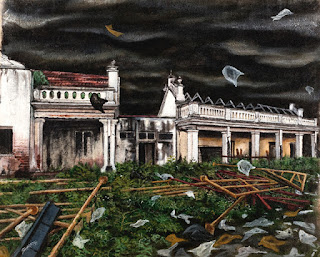In this insightful article, H.A. Anil Kumar contemplates M.B. Patil’s artistic contribution to the arts, and discovers he has made a statement by just being the way he was and that for him, the act was more relevant than the product

It was already two decades since he had retired as an artist employed with the State Government (Department of Information and Broadcast), when M.B.Patil (born: Tikota, Bijapur, 1939-2017) passed away recently. When he had freshly retired in the late 1990s and held a solo show at ‘Images’ gallery, Bengaluru, another artist-friend of his, K.T.Shiva Prasad had inaugurated it and given a piece of advice to the exhibitor: “Patil has retired now as an employed-artist, let him be creative from now on”. Most in the crowd smiled, giggled and laughed at this tongue-in-cheek remark, while Patil himself had his usual smile, which was not easy to decipher. It was a prejudice that ‘an artist who is not a freelancer is not creative enough’ that was unveiled and vented out during this occasion. Artistic activities are bound to be defined by what art means in any given, specific situation.
Patil’s artistic works might be as mysterious as his smile was: his works can be broadly divided, style-wise, into three categories: the collages, folksy images and his demonstrations, mainly portraiture. The burnt-wood style, for which he has been often so remembered, squarely fits into his folksy style. Perhaps painterly folk representation was already a tradition among Karnataka artists. Like many of his contemporaries (Chandranath Acharya, R.M.Hadapad, S.G.Vasudev), he did meddle a bit with the art of art direction in a few docu-drama films. Often some artists of Karnataka have been so varied in their styles that any amount of categorization style-wise or otherwise, would become impossible (ex: the visual works of R.M.Hadapad and Shivarama Karantha’s literary oeuvre). On the contrary, some artists are so well known for their unique styles, that there are even too many imitators of them; and those who generated the style themselves get creatively imprisoned in this demand for the ‘politics-of-imitation’.




